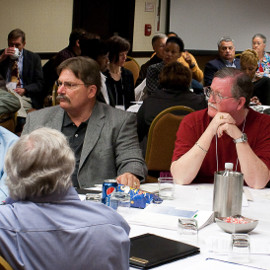What is a State Advisory Group?
State Advisory Groups (SAGs) were established in the Juvenile Justice and Delinquency Prevention Act (JJDPA). In each state or U.S. territory, a SAG may be known by an alternative title, such as a “commission” or “council.” Under the JJDPA, the Governor or Chief Executive of all states, territories, and the District of Columbia that choose to participate in the Act are required to appoint individuals who are knowledgeable about juvenile justice and delinquency prevention to the SAG. The SAG provides input into their state’s use of JJDPA funds. It is also responsible for supporting compliance with the core requirements of the JJDPA and providing information about the Act’s requirements to state and local policymakers.
Required members of a SAG include:
- At least one locally elected official;
- Representatives of law enforcement;
- Juvenile and family court judges;
- Prosecutors and defense attorneys;
- Probation workers;
- Representatives of public agencies concerned with delinquency prevention (welfare, social services, mental health, education, etc.);
- Representatives of private non-profit organizations (advocacy organizations with a focus on delinquency prevention);
- Volunteers who work with youth charged with delinquent offenses;
- Youth workers in alternative to incarceration programs;
- Persons with experience in school violence, learning disabilities, and child abuse and neglect;
- Persons, licensed or certified by the applicable State, with expertise and competence in preventing and addressing mental health and substance abuse needs in delinquent youth and youth at risk of delinquency;
- Representatives of victim or witness advocacy groups including at least one individual with expertise in addressing the challenges of sexual abuse and exploitation and trauma, particularly the needs of youth who experience disproportionate levels of sexual abuse, exploitation, and trauma before entering the juvenile justice system;
- For a State in which one or more Indian Tribes are located, an Indian tribal representative (if such representative is available) or other individual with significant expertise in tribal law enforcement and juvenile justice in Indian tribal communities;
- At least 20% (one out of five) members who must be under age 28 at the time of appointment; and
- At least three members who have been or currently are under juvenile justice system jurisdiction.

